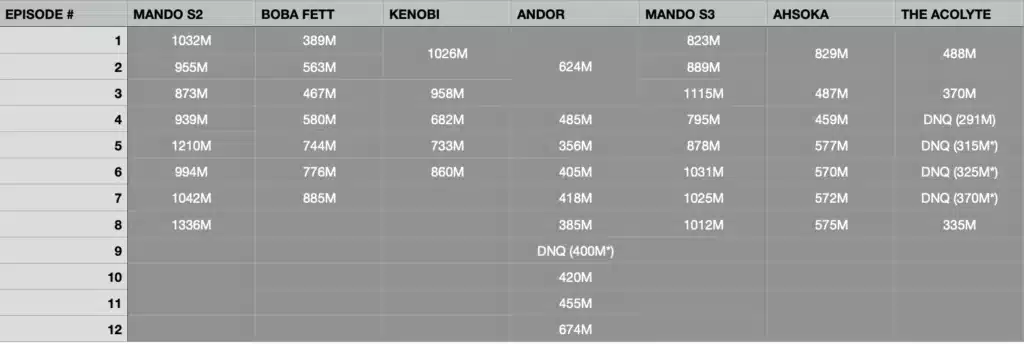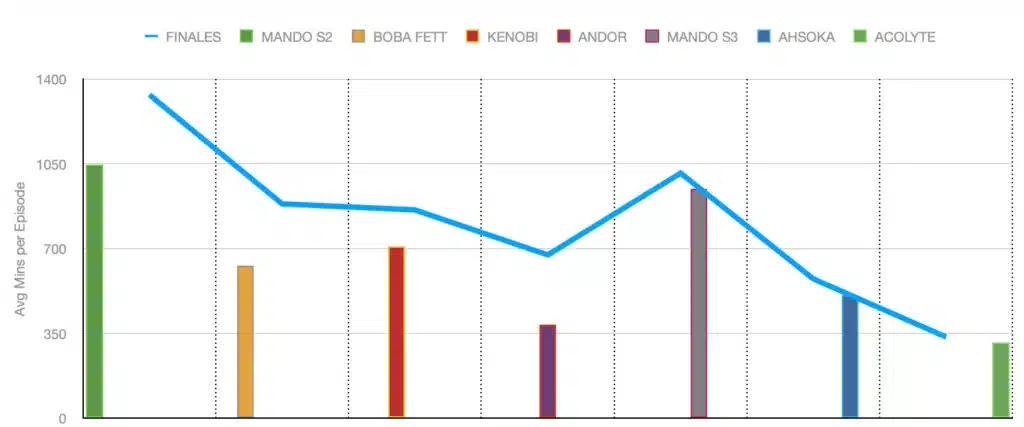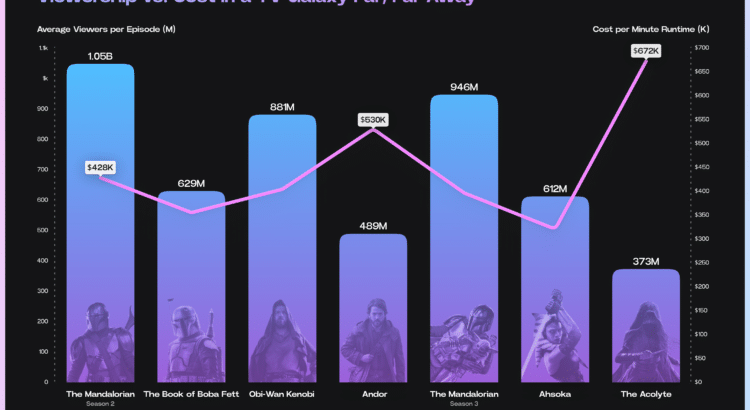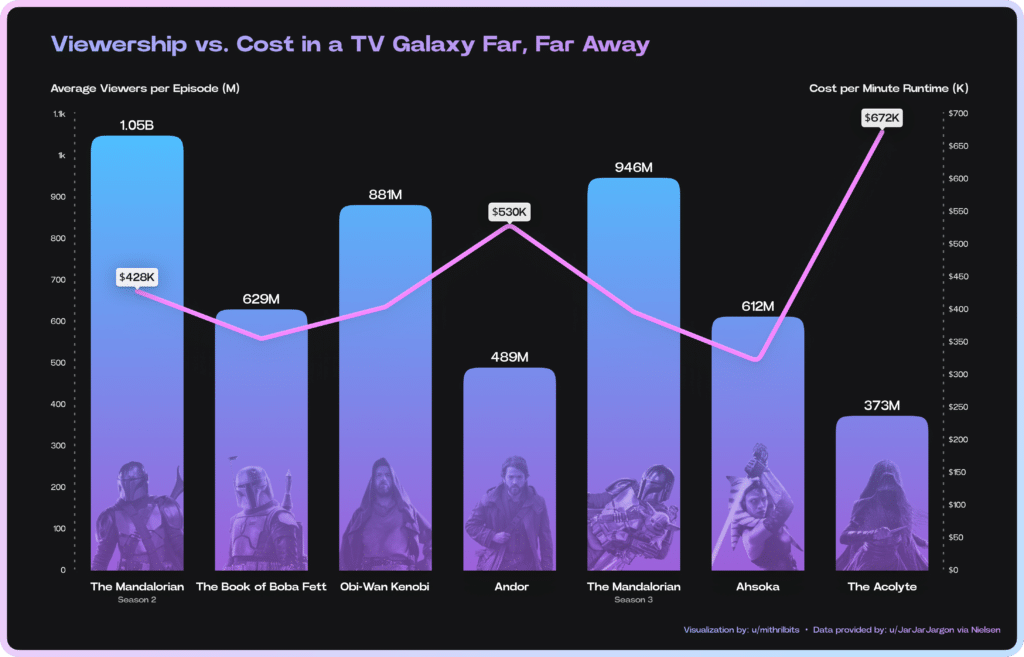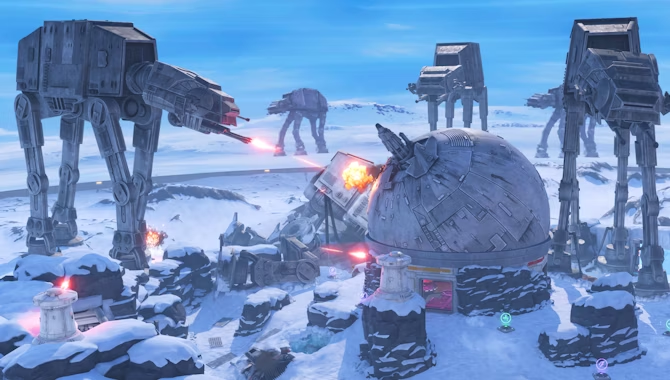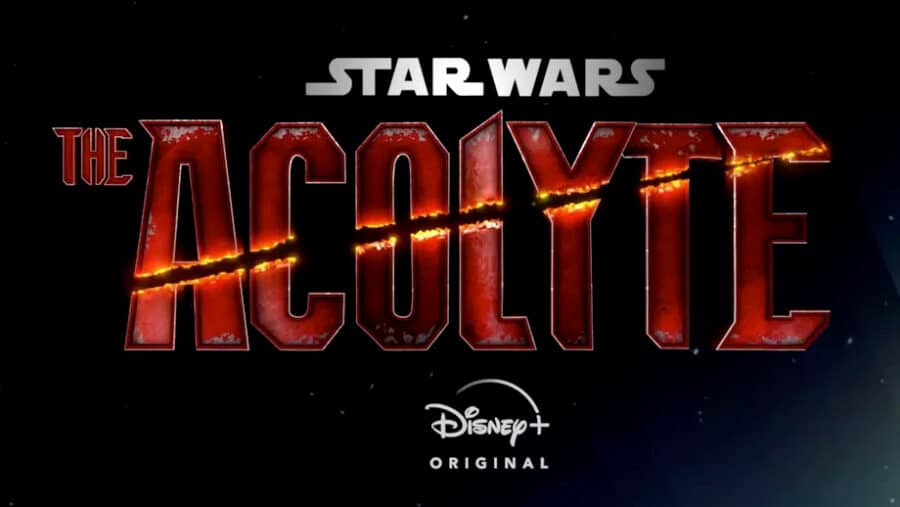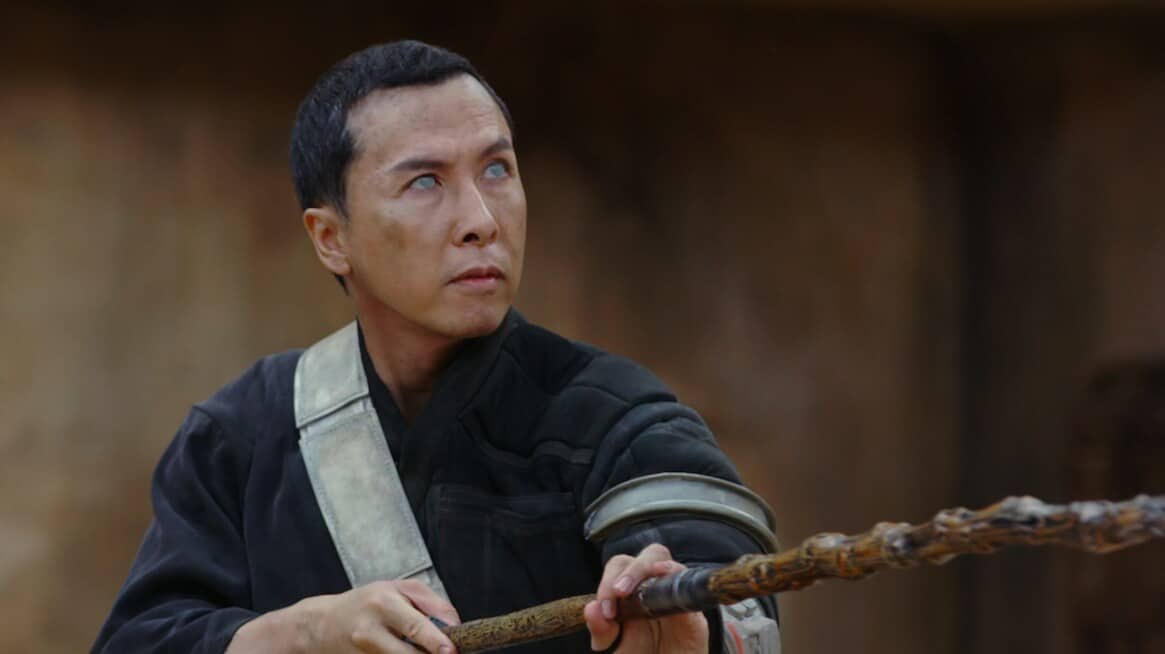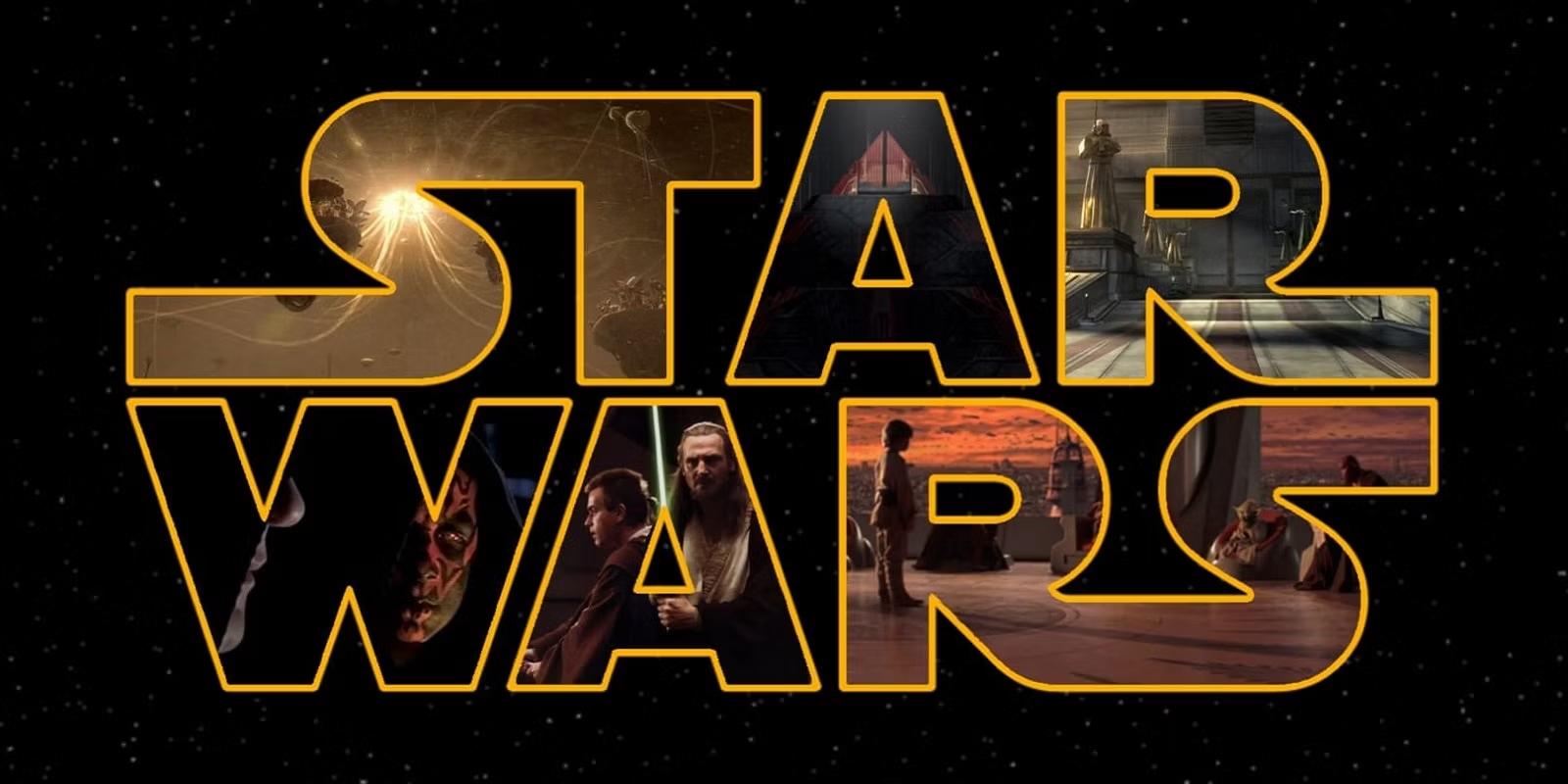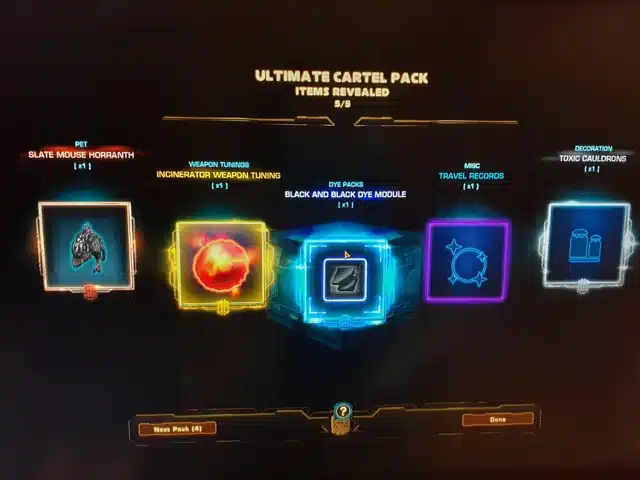In the expansive galaxy of Star Wars, television shows have taken center stage in recent years, becoming the main medium through which fans can explore new stories and revisit iconic characters. However, with great viewership comes even greater costs—or so it would seem. An analysis of several Star Wars TV shows, including The Mandalorian, The Book of Boba Fett, Andor, Ahsoka, and The Acolyte, reveals intriguing insights into how budget and audience reception align—or don’t. Spoiler alert: sometimes, the biggest spender doesn’t always win the hearts (or screens) of fans.
Let’s dive into the data, break down the cost per minute, and explore how viewership trends reflect (or defy) the investment put into these galactic adventures.
The Mandalorian: The Budget Darling
When The Mandalorian hit Disney+ in 2019, it was the first live-action Star Wars TV show, and it made an immediate splash with audiences. From Baby Yoda (sorry, Grogu) to its gritty, Western-influenced storytelling, it was an instant fan favorite. But how did that popularity translate into the show’s budget?
Season 2 of The Mandalorian boasted a whopping 1.05 billion viewers per episode on average, dwarfing other series. Yet, it wasn’t the most expensive show per minute. The cost per minute for The Mandalorian Season 2 was $428K, which is on the lower end when compared to other entries in this list. That’s right, despite its status as a fan-favorite and the flagship series for Star Wars on Disney+, it has proven that you don’t need to break the bank to dominate the viewership galaxy.
The takeaway here? Sometimes, a well-crafted story with practical effects and compelling characters (alongside a cute space baby) is all you need to capture an audience’s attention. The more modest per-minute cost of The Mandalorian reflects efficient spending with massive audience returns.
The Book of Boba Fett: A Case of Diminishing Returns?
Following the success of The Mandalorian, The Book of Boba Fett took the stage, focusing on the legendary bounty hunter and his adventures on Tatooine. While this sounds like a guaranteed hit, the numbers tell a slightly different story.
With 629 million viewers per episode, The Book of Boba Fett couldn’t quite match the success of its predecessor, despite being set in the same universe and sharing crossover characters. The cost per minute wasn’t explicitly stated in the chart, but we can infer that the cost was significant due to its elaborate set pieces and effects. However, in terms of impact, Boba Fett may have struggled to justify its budget compared to the viewership achieved.
The issue here might be audience expectations. Fans anticipated more action-packed bounty hunting escapades, and what they got was a mix of political intrigue and flashbacks of Boba Fett wandering the desert. Sometimes, it turns out, the myth of a character might outshine the reality of their day-to-day life.
Obi-Wan Kenobi: A Costly Nostalgia Trip
When Obi-Wan Kenobi was announced, fans rejoiced at the return of Ewan McGregor as the titular Jedi. The show delivered nostalgia and drama in spades, with iconic characters like Darth Vader also returning to the screen. However, nostalgia comes at a price—$530K per minute, to be exact.
Despite being the most expensive show per minute among these Star Wars entries, Obi-Wan Kenobi drew an impressive 881 million viewers per episode. That said, it’s fascinating that this series, centered around such a beloved character, didn’t quite surpass The Mandalorian in viewership.
This could be because, while the series featured dramatic lightsaber duels and emotional moments, the story felt a bit isolated. With so much focus on familiar characters and existing storylines, Obi-Wan Kenobi might not have drawn as much interest from casual fans as The Mandalorian did. Fans who hadn’t seen every Star Wars movie may have felt out of the loop, while The Mandalorian allowed for a fresh entry point.
Andor: Critical Darling, Viewer Underachiever
One of the most critically acclaimed Star Wars series, Andor turned heads with its dark and gritty portrayal of the early Rebellion. The storytelling was nuanced, and the stakes felt higher than ever in this grounded narrative. Yet, for all its acclaim, viewership averaged just 489 million per episode, making it the lowest of the bunch aside from The Acolyte.
What gives? Well, Andor also had a slightly lower cost per minute, falling at $530K per minute, and the show itself veered away from the typical Star Wars fare of lightsabers and Skywalkers. For casual fans who tune into Star Wars for space wizards and epic battles, Andor may have felt more like a departure than a natural extension of the universe.
Still, the show was praised for its more mature, intricate approach, so the lower viewership may not reflect the show’s overall quality. It’s just further evidence that critical success doesn’t always equal massive viewership numbers in the world of Star Wars.
Ahsoka: A Jedi’s Journey to the Middle Ground
Next up is Ahsoka, the latest addition to the Star Wars universe, featuring the beloved ex-Jedi on her own adventure. With 612 million viewers per episode, it sat comfortably between the massive highs of The Mandalorian and the lows of Andor.
Interestingly, Ahsoka‘s cost per minute was not sky-high either, suggesting that the show managed to balance high production value with solid viewership. This series benefitted from a dedicated fanbase that had followed Ahsoka Tano’s journey since The Clone Wars and Rebels animated series. Though it didn’t match The Mandalorian’s audience, it resonated strongly with hardcore Star Wars fans.
The Acolyte: High Cost, Low Viewership
Finally, we arrive at The Acolyte. This yet-to-be-released show holds an unenviable record for having the highest cost per minute—$672K per minute—and based on projections, the lowest viewership among this group, at 373 million. While the series hasn’t premiered as of the time this data was released, the numbers suggest that The Acolyte may face a challenge in justifying its enormous budget.
Much like Andor, The Acolyte could represent a shift in storytelling, focusing on the dark side of the Force in the High Republic era—an unexplored timeline in live-action Star Wars media. Whether audiences will embrace this more esoteric chapter of Star Wars remains to be seen, but the cost of creating such a show is already sky-high.
Final Thoughts: Is Bigger Better in a Galaxy Far, Far Away?
The data paints a clear picture: higher budgets don’t always translate to higher viewership. The Mandalorian remains the gold standard, with massive viewership and a relatively low cost per minute, while shows like The Acolyte and Andor are examples of how spending big doesn’t always guarantee a massive audience.
At the end of the day, Star Wars fans are a passionate and diverse group. They show up for different reasons—some for nostalgia, some for new stories, and some for groundbreaking new takes on the galaxy. However, the success of any show comes down to striking the right balance between cost, quality, and audience engagement. Let’s just hope future Star Wars projects keep finding new ways to surprise us, whether it’s with lightsabers or low-budget breakthroughs.
Nielsen ratings for all released Star Wars TV series
